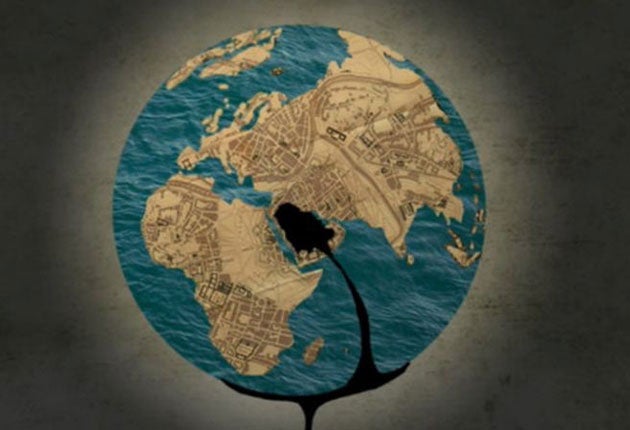Oil power: Vocal cinema
Film-makers are using the rush to exploit oil from Canada's tar sands as material for their movies – and spreading an important message, says Rob Sharp

One minute, herds of caribou are scampering through the lush green subarctic forests of western Canada. The next, their progress is impeded by country-sized carve-ups of vegetation. Toxic ponds visible from space leak poisonous chemicals into rivers. Cavalcades of diggers score through the countryside, eager to lay their claws on that most precious of fuel deposits – bitumen, convertible into crude oil.
The Athabasca Oil Sands, an accumulation of petrochemicals the size of England, is one of the largest sources of crude oil in the world. Since 2006, the sands have generated 1.1 million barrels of oil a day. It is estimated that the grimy residues from the area will contribute to 8 per cent of Canada's carbon dioxide emissions by 2015. In 2006 the Canadian government abandoned its promise to slash its greenhouse gas emissions under the Kyoto protocol. The international environmental press widely greeted its obstructive approach to December's climate change summit in Copenhagen with incredulity. Why have the Canadians been prevaricating? Three guesses. It's colossal, sticky, and scabs swathes of countryside like an oily blister.
In the last month, two films about the Alberta deposits have arrived on Britain's shores. Petropolis, released in selected cinemas last month, was shot in the style of Koyaanisqatsi, a 1982 film most famous for its Philip Glass soundtrack, featuring montaged time-lapse photography of cities and natural landscapes. Petropolis's director, seasoned Canadian filmmaker Peter Mettler, favoured well-shot panoramas over endless voice-overs. HOil, which premieres in Britain on Friday and is directed by Canadian-South-African Shannon Walsh, takes a more conventional documentary approach. Walsh interviews members of a small aboriginal community in Fort Chipewyan, down river from the sands, where increasing numbers of the population are being diagnosed and dying from rare cancers and auto-immune diseases.
"For me, it really is a human story," says Walsh, on the phone from Montreal. "Because the environmental movement is so vocal we sometimes forget about the people living close to the problem. These individuals who are leading the fight against the tar sands are the indigenous communities. Their story is essential to doing this justice."
Walsh found out about Fort Chipewyan through the local newspaper and relays its tragedy through talking heads of community's members, as well as jaw-dropping helicopter shots. "Humans are visual creatures," she continues. "You take one look and know something's wrong. What was incredible was that when I returned to my home city of Montreal, so few people had heard about what was going on. While the film seeks to raise awareness about the tar sands it also seems to be building this global movement."
Mettler's film was commissioned by the Canadian wing of Greenpeace. Mettler went on a reconnaissance flight, looked at the rushes and decided that aerial shots were compelling enough. "Once I'd seen the material, I realised I had to make a film that way," he says. "At that point I'd only really seen still photographs and it was hard to see how they sat in relation to the entire landscape. I also felt that in the current climate of environmental films we are often faced with a lot of people on-screen telling us statistics and that can get mind-numbing." His crew used a helicopter with a remote-controlled, specially-mounted camera. But does it hold up as a viewing experience? While Petropolis is visually engaging, by the end, audience members may yearn for a touch of talking. HOil goes some way to meeting this need. It cogently describes how water from the sands' tailing ponds – huge reservoirs of water that are a by-product of the extraction process – leak fluid into the Athabasca River. Some of these ponds have been constructed higher up than the flowing water. Runoff – which contains a mixture of clay, sand and hydrocarbons – into natural ecosystems is somewhat inevitable.
So what about the future? "If you're being optimistic it's a disaster that hasn't happened yet," says Chris Shearlock, sustainable development manager for at The Co-operative Group, which is distributing the films alongside British distributor Dogwoof, which focuses on ethical films. "We've still got the chance to pull it back from the brink. There's a huge area of wilderness that's still earmarked for development. Only the size of the Lake District has been developed so far. It really is madness; it is using man's innovation in the wrong direction. We are tearing down the boreal forest and are using huge amounts of energy to get it. There's little up-side. We need to calm things down. And fast."
'H20il' premieres on 11 June. For screenings information see Toxicfuels.com
Join our commenting forum
Join thought-provoking conversations, follow other Independent readers and see their replies
Comments
Bookmark popover
Removed from bookmarks